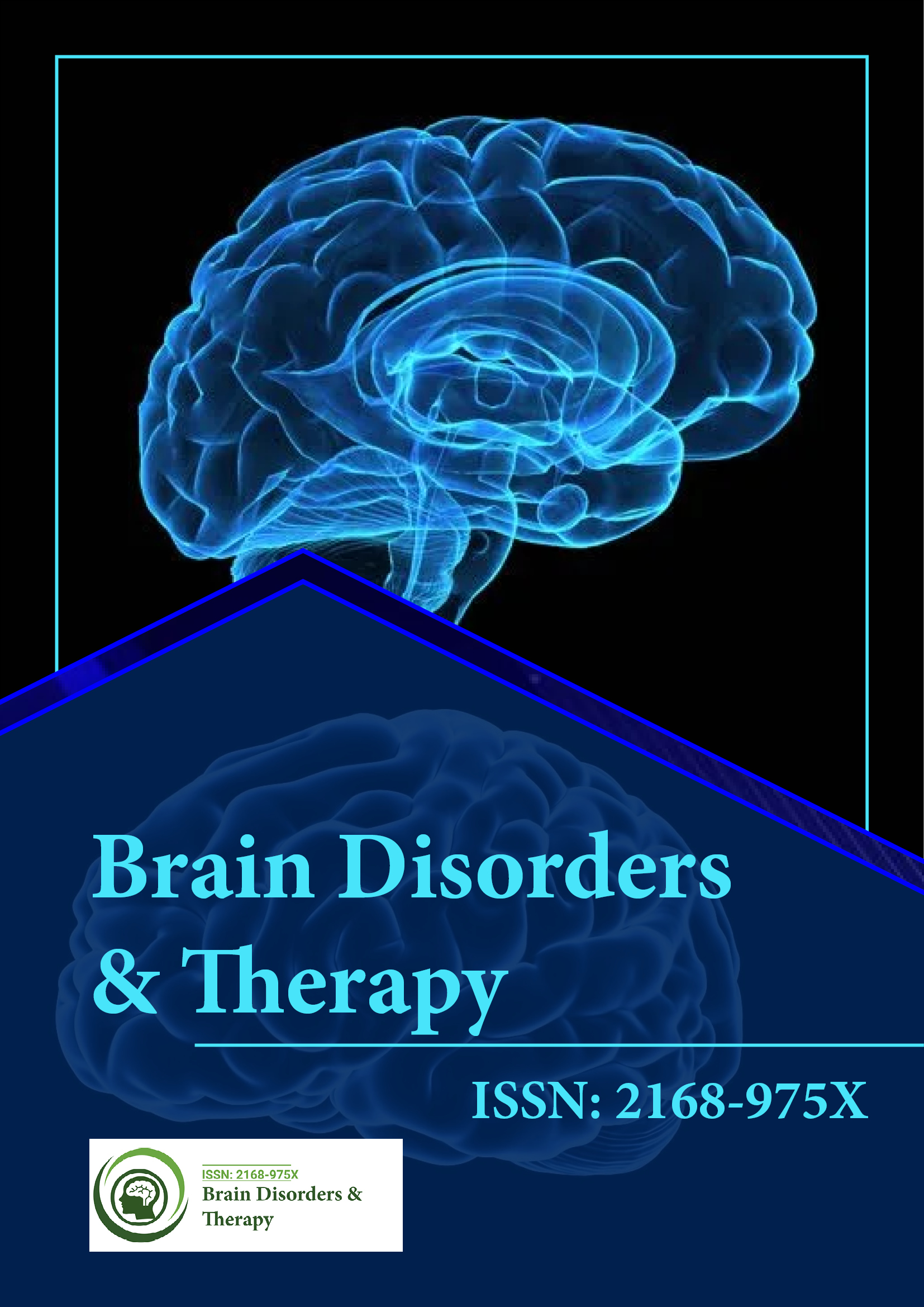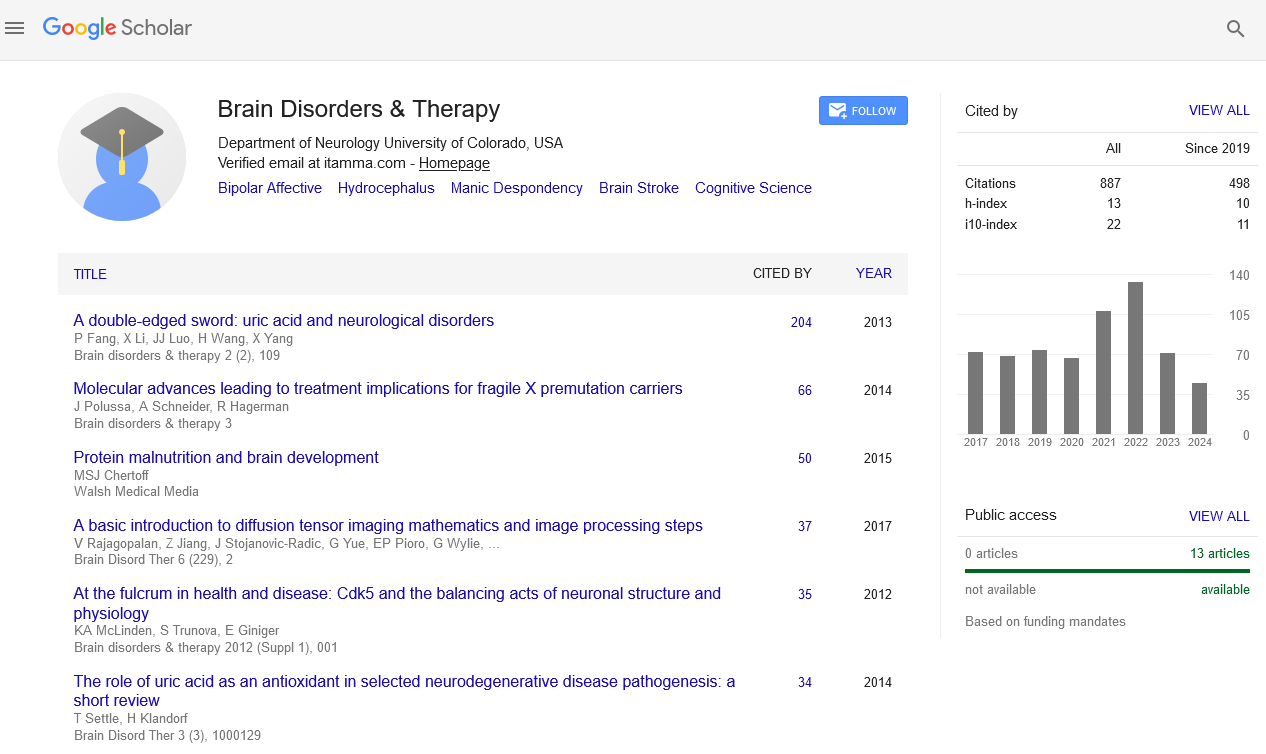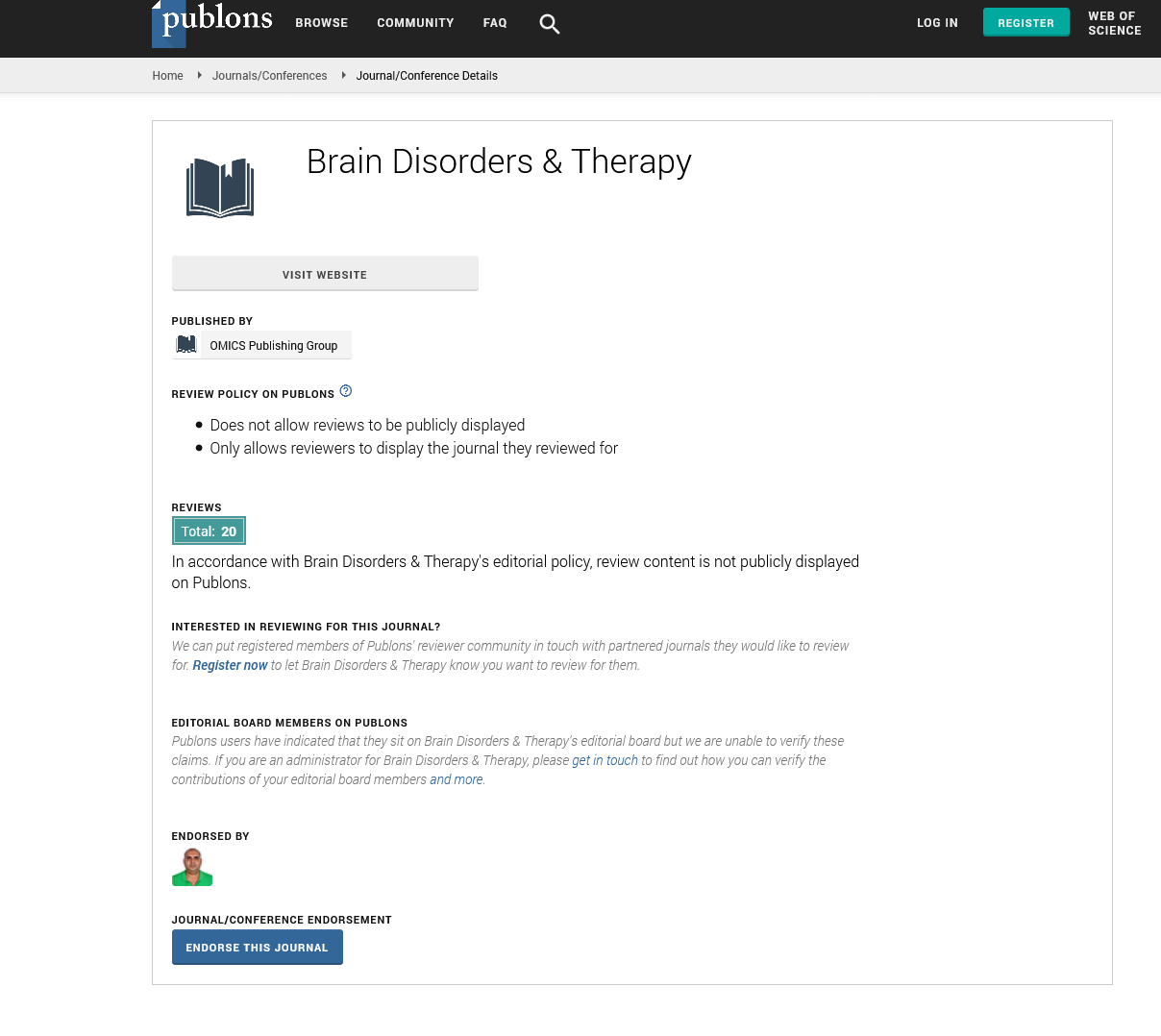Indexed In
- Open J Gate
- Genamics JournalSeek
- JournalTOCs
- RefSeek
- Hamdard University
- EBSCO A-Z
- OCLC- WorldCat
- Publons
- Geneva Foundation for Medical Education and Research
Useful Links
Share This Page
Journal Flyer

Open Access Journals
- Agri and Aquaculture
- Biochemistry
- Bioinformatics & Systems Biology
- Business & Management
- Chemistry
- Clinical Sciences
- Engineering
- Food & Nutrition
- General Science
- Genetics & Molecular Biology
- Immunology & Microbiology
- Medical Sciences
- Neuroscience & Psychology
- Nursing & Health Care
- Pharmaceutical Sciences
Perspective - (2024) Volume 13, Issue 4
Advancing Brain-Behavior Research with Contextual Approaches
Misha Katsumi*Received: 22-Nov-2024, Manuscript No. BDT-24-27657; Editor assigned: 25-Nov-2024, Pre QC No. BDT-24-27657(PQ); Reviewed: 09-Dec-2024, QC No. BDT-24-27657; Revised: 16-Dec-2024, Manuscript No. BDT-24-27657(R); Published: 23-Dec-2024, DOI: 10.35248/2168-975X.24.13.284
Description
The study of brain-behavior relationships lies at the heart of neuroscience, aiming to understand how neural activity and structures give rise to thought, emotion and action. While advancements in imaging technologies, computational models and experimental techniques have provided invaluable insights, the field remains challenged by unresolved complexities. Central to these challenges are the basic assumptions that underlie research methodologies and interpretations. Reassessing these foundational ideas can enhance the rigor, reproducibility and relevance of studies linking brain function to behavior.
Behavior emerges from an complex interaction of neural networks operating at multiple levels, from individual neurons to whole-brain systems. Despite the brain's complexity, research often relies on simplified models and assumptions to make sense of this relationship. These assumptions, while necessary for experimental design and data analysis, can sometimes lead to oversimplifications or misinterpretations. Revisiting these foundational ideas is critical for uncovering the nuances of how the brain supports behavior.
One of the most pervasive assumptions in brain-behavior research is that specific behaviors or cognitive functions are localized to discrete brain regions. This notion, rooted in phrenology and later supported by lesion studies, has driven the development of neuroimaging techniques like fMRI and PET. While these tools have revealed critical functional areas, such as the role of the motor cortex in movement or the hippocampus in memory, the localization model often overshadows the importance of distributed networks.
Emerging evidence suggests that behaviors arise not from isolated regions but from dynamic interactions across brain networks. For instance, executive functions involve communication between the prefrontal cortex, parietal lobes and subcortical structures, forming an interconnected network. Similarly, emotional processing relies on interactions between the amygdala, prefrontal cortex and limbic system. Focusing solely on localization risks neglecting these integrative processes, underscoring the need to adopt models that capture the complexity of network dynamics.
Another common assumption is the notion of linear and static brain-behavior relationships. Many studies presume a direct correlation between a specific neural activity pattern and a particular behavior. While linear relationships are easier to quantify, the brain operates through non-linear and dynamic mechanisms. For example, a small change in neural activity in one region may lead to significant downstream effects due to network connectivity.
Moreover, brain-behavior relationships are not static but contextdependent. A brain region’s role may shift based on task demands, environmental factors, or individual differences. Revisiting this assumption requires embracing methods that account for non-linear dynamics and adaptability, such as machine learning and computational modeling, which can handle complex data and identify intricate patterns.
Research on brain-behavior relationships often aims to identify general principles that apply across populations. However, this approach can overlook the substantial variability among individuals. Differences in genetics, development, environment and experience can all influence brain structure and function, leading to diverse behavioral outcomes. For example, while some individuals may rely heavily on prefrontal regions for decision making, others might engage alternative networks, reflecting compensatory mechanisms or distinct strategies.
To address individual variability, researchers should prioritize personalized approaches. Techniques such as individualized brain parcellation, which tailors brain maps to each person’s unique anatomy and function, can improve the precision of analyses. Additionally, longitudinal studies that track changes within individuals over time can provide insights into how brain behavior relationships evolve, offering a richer understanding than cross-sectional designs.
A fundamental goal of brain-behavior research is to establish causal relationships between neural activity and behavior. However, many studies rely on correlational methods, such as neuroimaging or electrophysiology, which reveal associations but cannot determine causality. For instance, observing increased activity in the anterior cingulate cortex during error detection does not confirm that this region causes error detection it may instead reflect a downstream effect or parallel process.
Revisiting this assumption requires integrating techniques that allow for causal inference. Methods such as Transcranial Magnetic Stimulation (TMS), optogenetics and lesion studies can perturb neural activity and assess the resulting behavioral changes, providing stronger evidence for causal links. Combining these approaches with observational techniques can create a more comprehensive understanding of brain-behavior dynamics.
Conclusion
The study of brain-behavior relationships is a cornerstone of neuroscience, yet it is constrained by long-held assumptions that can limit progress. Revisiting these assumptions such as localization, linearity and generalization can open new avenues for discovery and innovation. By embracing network-based models, accounting for individual variability, adopting causal methods, expanding behavioral assessments and integrating multimodal approaches, researchers can enhance their understanding of the brain’s complexity. Ultimately, refining the study of brain-behavior relationships will not only advance scientific knowledge but also improve interventions for neurological and psychiatric disorders, benefiting individuals and society as a whole.
Citation: Katsumi M (2024). Advancing Brain-Behavior Research with Contextual Approaches. Brain Disord Ther. 13:284.
Copyright: © 2024 Katsumi M. This is an open-access article distributed under the terms of the Creative Commons Attribution License, which permits unrestricted use, distribution, and reproduction in any medium, provided the original author and source are credited.


